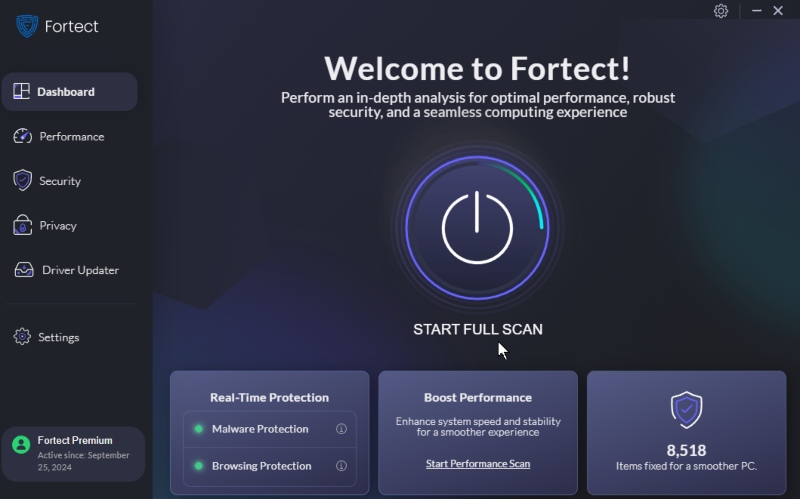Homograph Attack: What is it and How to Avoid it
Security threats are continually evolving, and one such threat is the homograph attack. This sophisticated cyber attack can trick users into visiting malicious websites or disclosing sensitive information. Understanding a homograph attack and how to protect yourself is crucial for maintaining your online security.
Fortect guide will explain homograph attacks and offer practical tips on how to avoid them, especially for Windows users.
What is a Homograph Attack?
A homograph attack is a type of cyber attack that exploits characters in a domain name that look similar to standard ASCII characters. These visually deceptive characters can trick users into believing they are on a legitimate website when, in fact, they are on a malicious one.
Homograph attacks are hazardous because they can bypass traditional security measures that rely on recognizing standard character patterns.
How do Homograph Attacks work?

Homograph attacks exploit characters from different scripts resembling standard Latin alphabet characters. For example, Cyrillic, Greek, or other non-Latin script characters may look identical or similar to Latin characters.
Cybercriminals use these lookalike characters to create domain names that appear legitimate but redirect users to malicious sites designed to steal information or spread malware.
How to Protect Yourself from Homograph Attacks?
Protecting yourself from homograph attacks requires vigilance and the use of specific security practices. Here are some steps Windows users can take to safeguard their online activities:
Use a Trusted Security Suite
Install and keep an updated, reputable security suite to protect your Windows PC. High-quality security software should offer features to detect and block fraudulent websites and phishing attempts, with real-time protection and a proven track record against cyber threats.

While many security options are available, Fortect PC Solution stands out for its robust protection. Fortect provides comprehensive antivirus and malware defense, safeguarding against advanced threats like homograph attacks. It automatically scans your PC for issues, offers real-time updates, and promptly removes threats to ensure your system remains secure.
Download and install Fortect now.
Verify URLs Carefully
Before clicking on links or entering sensitive information, carefully verify the URL of the website you are visiting. Check for any unusual characters or misspellings that might indicate a deceptive site. Ensure the website address starts with “https://” and displays a secure padlock icon in the browser’s address bar.
Enable Browser Security Features
Modern web browsers often include security features to detect and block suspicious websites. Ensure these features are enabled and update your browser to benefit from the latest security enhancements. Many browsers offer extensions or add-ons to protect against phishing and fraudulent sites.
Be Cautious with Emails and Links

Be wary of email messages or social media posts containing links to unfamiliar websites. Cybercriminals often use these methods to distribute homograph attacks. Avoid clicking on links from unknown sources and verify the legitimacy of any message or link before interacting with it.
Educate Yourself About New Threats
Stay informed about the latest cybersecurity threats and best practices. Awareness is a crucial defense against homograph attacks and other online threats. Regularly review resources from trusted cybersecurity organizations to stay up-to-date with emerging risks and protective measures.
Additional Best Practices for Online Security
In addition to specific measures for preventing homograph attacks, consider implementing these general online security best practices:
Use Strong, Unique Passwords

Ensure that your online accounts are protected with strong, unique passwords. Avoid using the same password across multiple sites, and consider using a password manager to generate and store complex passwords securely.
Regularly Update Your Operating System and Software

Keep your Windows operating system and all installed software updated with the latest patches and security updates. Updates often include fixes for vulnerabilities that cybercriminals could exploit.
Enable Two-Factor Authentication (2FA)
Whenever possible, enable two-factor authentication (2FA) on your online accounts. 2FA adds an extra layer of security by requiring a second form of verification, such as a code sent to your phone, in addition to your password.
Backup Your Data Regularly
Regularly back up important data to an external drive or cloud storage service. Recent backups can help you recover your files and minimize the impact of a security breach or malware infection.
Conclusion
Homograph attacks are sophisticated cyber threats that can trick users into visiting malicious websites by exploiting visually similar characters. Windows users can protect themselves from these deceptive attacks by understanding homograph attacks and implementing effective security measures.
To maintain online safety and security, use trusted security software, verify URLs, enable browser security features, and stay informed about the latest threats.



